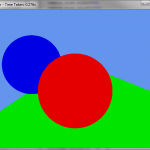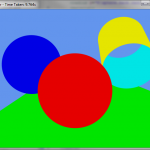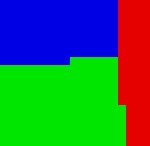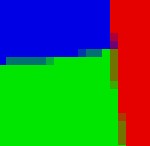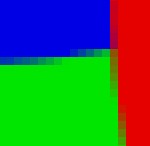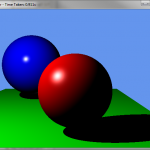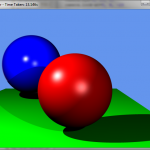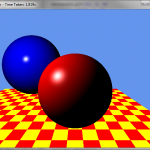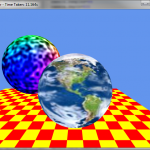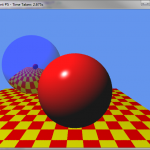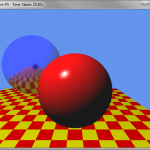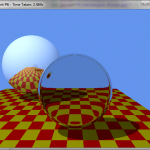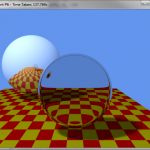The main project for Computer Graphics II was to write a ray tracer that supported multiple geometric shapes that could be rendered, multiple shading and lighting models, and multi-sampling for a smoother and more high-fidelity image. As a graduate student, additional functionality was required for the project. I decided to replace the standard pinhole camera with a more realistic camera model, as well as distributing the rendering processes across multiple networked computers.
Assignment 1
The first assignment was to setup the scene to be rendered. This included setting the positions, dimensions and types of objects that will be in the scene.
Assignment 2
This assignment was to render spheres and planes. An extra part for this assignment was to add an extra shape and include multi-sampling. A cylinder and power of 2 multi-sampling were added.
Assignment 3
This next assignment was to add Phong, Lambert and Blinn shading models, as well as shadows to the ray tracer. An extra step was to add support for multiple lights.
Assignment 4
This assignment added texture mapping to the ray tracer. The checkerboard texture mapping was required to be implemented for this assignment, but the addition of an image mapping and Perlin noise function was extra.
Assignment 5
This next assignment added reflection into the ray tracer. The additional feature of sampling the reflection was added to give it more of a realistic diffuse reflection.
Assignment 6
This assignment added refraction to the ray tracer. As an added bonus, soft shadows were added to replace hard shadows, giving the image a more realistic look.
Graduate Project
For the graduate project, I chose to extend the ray tracer to include a more realistic camera model and to use a distributed application for rendering to speed up rendering time of high quality images. This final image utilizes all the previous assignments into one image.
These two images are of the same scene that utilizes all of the previous featured added over the entirety of the course: multi-sampling; Phong, Blinn, Lambert shading models; texture sampling; reflection and refraction; along with depth of field from the realistic camera model.
This image shows what I called “lost pixels.” These pixels were lost over the network due to packet loss or timeout between client applications and the server. These pixels show up as white pixels.
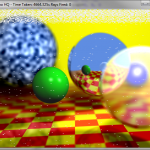
This image was rendered using the following setup:
- 3 Computers
- Windows 7 AMD Athlon 64 2GHz
- MacOS X 10.5 Intel Core 2 Duo 2.2GHz
- Windows XP Intel Core 2 Duo 2GHz
- Render Time: 1 hour 17 minutes
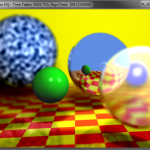
This image was rendered using the following setup:
- 1 Computer
- Windows 7 AMD Phenom II x4 3GHz
- Render Time: 2 hours 39 minutes
- Rays Fired: 10,611,545,980
